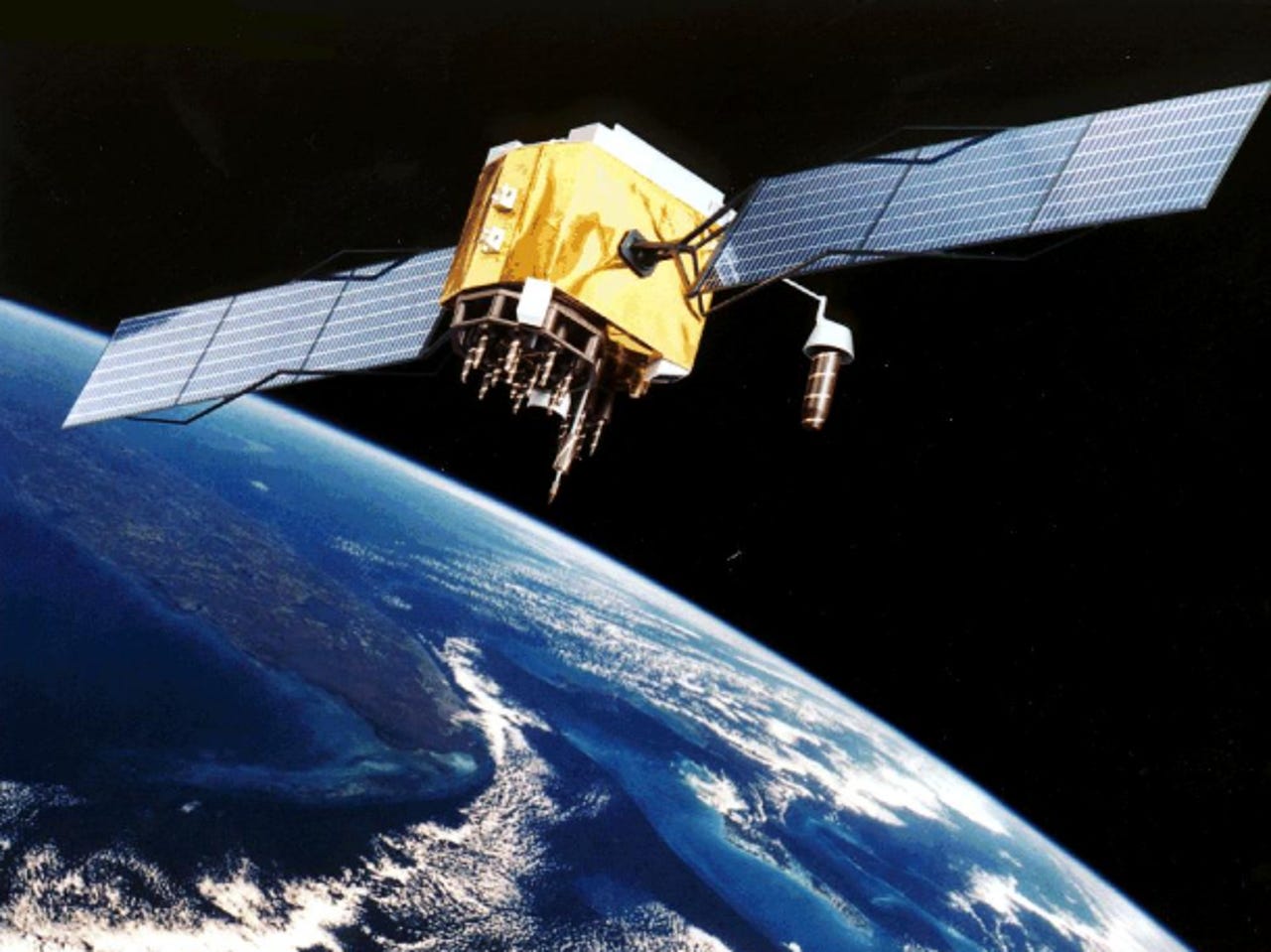Falling Debris: Tech devices that crashed to Earth


Even with last-minute updates from NASA and US Strategic Command pinpointing when and where the Upper Atmosphere Research (UARS) satellite will begin its final plunge into the Earth's atmosphere, the sheer size of the planet, with its vast stretches of ocean and remote terrain, means the odds of catching a glimpse — or of being anywhere near any falling debris — will be remote.
The re-entry is expected to occur between 11 a.m. PT and 3 p.m. PT on Friday Sept. 23.
More from around the network:
Internet Explorer has been a blotch on the recent Microsoft timeline. Once the flagship web browser of Windows XP, the world's most used operating system, used by hundreds of millions worldwide, Microsoft decided "enough was enough".
After a long campaign of asking others to pass the message on to their friends, the software giant is desperate to get rid of the browser, superseded by three newer browsers. Plagued by security issues and vulnerabilities, Microsoft vowed to support the browsers' users until global share reaches 1 percent, but that is not expected in the next year or so.
It is believed that the browser was the reason why Google left China -- sparking a worldwide diplomatic outrage between the United States and China.
The games console that never even had the chance to succeed.
Launched in November 1998 in Japan, nearly a year later in September 1999 in North America and shortly after in Europe in October 1999, the 128-bit video games console was discontinued only a couple of years later after poor sales and its lack of available games. The new chair of Sega, who manufactured the device, wanted to focus on software instead of games consoles.
Having said that, despite its short lifespan, the games console was vastly ahead of its time, but suffered with poor marketing and other rival games consoles of the time. Only 10 million consoles were sold during its time, but many can still be found on eBay for cult collectors.
RealPlayer, though hard to believe, is nearly 17 years old this year. Available on a wide variety of platforms, and even on mobile devices, in theory it could be one of the best media players on the planet.
But the sluggish, slow and packed full of crapware software was nothing but a plague on millions of computers worldwide. Spyware was even found to be in the software, which led to a massive boycott and controversy surrounding the company that makes the software.
Though it supports MP3s, MPEG-4 formats, QuickTime and Windows Media formats, the only reason anyone would use it is if they were forced to, by needing to view or listen to its propriety RealAudio and RealVideo formats.
It's no VLC, suffice to say.
When Sony declared a war on software and music piracy in 2005, little did the world consider that the company could be putting malware on the discs it sold.
When the CD was inserted into a computer, it would install a rootkit invisible even to the most advanced anti-spyware or anti-virus software of the time. But Sony was found up the creek when hackers and cyber-attackers would use the same rootkit to hide malware of their own to capture keystrokes or steal data.
Over half a million machines were infected, which was only made worse by a "fix" that Sony brought out to try and solve the problem. Lawsuits flew everywhere as a result, and Sony was left very red-faced after the whole incident.
Poor old Alan Sugar. Founder and chief of British firm Amstrad, he may have missed the boat on the email revolution.
Released weeks after the millennium, the part-landline, part-email 'machine' cost £79.99 (nowadays, that would be £130, or $199), and an additional 12p ($0.20) to send each email. It was a total rip-off and difficult to use. Had it been released a few years before hand, it could have made a ton in sales.
But while computers and modems were still expensive, the Em@iler was just late to the game.
Zip drives just never took off, let alone crash to the ground like a satellite falling from space.
Iomega launched the mass-storage removable drive in 1994. The problem was is that it was hardly mass storage. It was for the time, at 100 MB, 250 MB and a whopping 750 MB. But a series of lawsuits and a class-action suit forced the company into giving out rebates on future products.
The problem was that the devices clicked and tweaked, and then rendered the data inaccessible. Millions were sold, but so many of them failed, rendering the Iomega name practically dead.
Windows Vista. *shudder*.
After Windows XP, the world's most popular and used operating system, Microsoft needed a new challenge. It wanted to bring security and eye-candy to a world that had been under attack all but constantly, every minute of the day. The web was full of malware, and frankly Vista did not exactly help the problem. It wanted to, but it was too bogged down with its own internal bureaucracy -- called "User Account Control".
But it broke too many hardware devices, and the security protection was nominal. It was slow and sluggish and sales plummeted. Until Windows 7 came out, many had suffered with the operating system, while many had reverted back to XP. The lucky ones hadn't upgraded at all.
Ahh, the Furby. Something I remember well from my childhood. While the fluffy 'robotic' toy was reactive and incredibly well formed for its time, they were sold in absolute mass. But demand soon became frustration as nobody could seem to get one. Only one kid at school managed to get one for the Christmas holiday, and the rest of the class hated them for it.
The Furby's demand alone caused so many fights and arguments in families across the world. Demand was so high, and only 30 million devices were sold, that many were left disappointed and angry. The Furby soon became one of the most hated products of the late-'90's because practically nobody could get one.
I eventually got one for my 18th birthday -- nearly ten years late.
The N-Gage never really fit anywhere. It wasn't quite a phone -- because you had to hold it sideways as though you were holding a giant, half-eaten Jaffa cake to your head, and they weren't quite games consoles either, sporting the tiniest of screens. Granted, they were popular amongst the community, but the community barely hit the million mark.
Less than 5 million devices were sold around the world. Though it had Tomb Raider as the popular ported game for the time in MMC-card format, and played excellently I might add (I owned one when I was 15 years old), it was surpassed by other handheld gaming consoles like the Nintendo DS and the PlayStation Portable. Games were also locked to the device, leaving many gamers angry at Nokia's single-device policy.
Its cost alone at $299, back in the day when money was tight, led to its early demise.
Zune vs. iPod. The iPod wins, hands down.
Not only did the Zune come late to the game, the iPod, made by Apple, had already hit the many millions-sold mark by the time Microsoft had even thought of the Zune. Microsoft, so desperate to compete with arch-nemesis Apple, released the Zune knowing full well that it would barely scrape the marketshare dominance of the world-loving iPod -- a device which revolutionised portable music storage and playback.
The Zune was clunky and lacked the simplicity of the iPod's user interface. It was disproportionately priced for what it offered, and lacked compatibility with existing music software -- namely iTunes.
Well, I hate to say it, but if you have or own a netbook, congratulations! You're using something that doesn't do anything very well. Of course, they are small and compact, but still nearly as heavy as an ordinary laptop. And, let's be honest, they often only contain the very bare minimum to run the operating system -- and even then, only Ubuntu really managed to bring an operating system to a netbook without it running at a snail's pace.
But never fear. Even though Windows 8 may bring a slightly enhanced experience, your netbook will probably be nothing more than an antique by then. Just as every webOS powered device is now, your netbook can gather dust on the shelf and be admired from a distance.